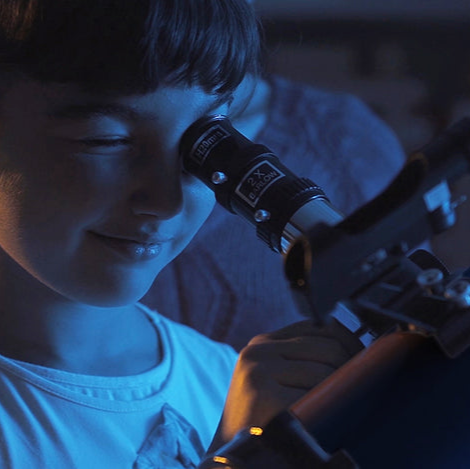PMC-Eight Experiences and Testimonials
The Explore Scientific PMC-Eight device is an Eight-Processor Precision Motion Controller integrated to create an open-source GOTO system to work with the Explore Scientific/Losmandy G11 PMC-Eight, the EXOS2 PMC-Eight, and the new iEXOS100 PMC-Eight.
In this section we highlight some user experiences, astrophotographs made with these systems, and guiding performance data to help you evaluate if the PMC-Eight is right for you:
Using a Tablet Instead of a Handbox
“On Saturday, I set up and leveled the mount, and mounted my ES AR127. The bubble level on the mount seemed accurate as compared to my 6” level that I use. I used the polar scope for polar alignment, and then waited on Polaris to appear….I had a list of about 20 targets that I wanted to see that night, and by 11:15, I had covered them all. With some early morning responsibilities, l packed up and left, very pleased with how the mount worked.”
“I didn’t know if I would like using a tablet instead of a handbox. The tablet worked fine, including when I was centering the object, either using the arrows or using the slider. It was very predictable. Connection was every fast. My 2014 Samsung Galaxy tablet, using Android 5.1.1, worked fine. I didn’t miss the handbox at all. Once everything had settled down, the alignment process was also very quick.”
Paul Shirley - Roper Mountain Astronomers
Auto-guiding Kept Object Centered!
“I am up and running with auto-guiding capability operational. I can guide longer than 5 minutes with perfect stars using MaxIm DL. Here are a couple test images made remotely using 3-minute subs (high clouds were a problem during exposures). Nonetheless auto-guiding kept object centered! I'm also including an earlier image of M51 highly processed and inverted as I thought it looked pretty cool. As you know I am using an Explore Scientific 80mm refractor with the EXOS 2 PMC-Eight mount.”
-Myron Wasiuta - Rappahannock Astronomy Club
The Ultimate Portable System
"One of the reasons I purchased the iEXOS100 [PMC-Eight] was for wide field astrophotography with the intentions of using a camera lens when I am out camping during the summer. It's a great little portable mount and I'm very impressed with this system especially for the price. The clutches are very smooth and there is no problem getting a nice balance, and does not have the "stiction" found in other mounts. I am using Explore Scientific's ASCOM connection for GOTO control. It has the built-in serial converter for the USB port, so there is only the one cable, so there is no screwing around with that. So that's really nice. The build quality is very nice. I really like the glow-in-the-dark markings on the mount and tripod, it helps stand out in the dark so you don't trip over the tripod. You can use the images that I sent over of the Heart and Soul Nebula taken with my ZWO ASI1600MM attached to a camera lens. I live in Newfoundland with a north latitude of 47 degrees, and I took these images in -8 or -9C so the mount has no problems at all working in the cold. This is the ultimate portable system as far as I am concerned."
“First image taken with iEXOS 100 mount [the Heart and Soul Nebula], ASI1600mm-cool and Canon 55-250 mm lens (shot at 135 mm). This image consists of 33 5 minutes subs. I also include a pic of my guide graft and guiding log [indicating less than 1.7 arc seconds RMS] for those interested. Image acquired using SGP and Guiding via PHD2. All connected to mount via ASCOM using wired connection and POTH Hub. [Autoguiding] was [with a] Orion 50mm mini guide scope and ASI224mc camera.”
-Jim Johnston



- PMC-Eight, the Vision and Technology
- ExploreStars App and ASCOM Downloads
- PMC-Eight Knowledgebase
- The OpenGOTO Community Home Page
- PMC-Eight and OpenGOTO Community Groups.io Forum











